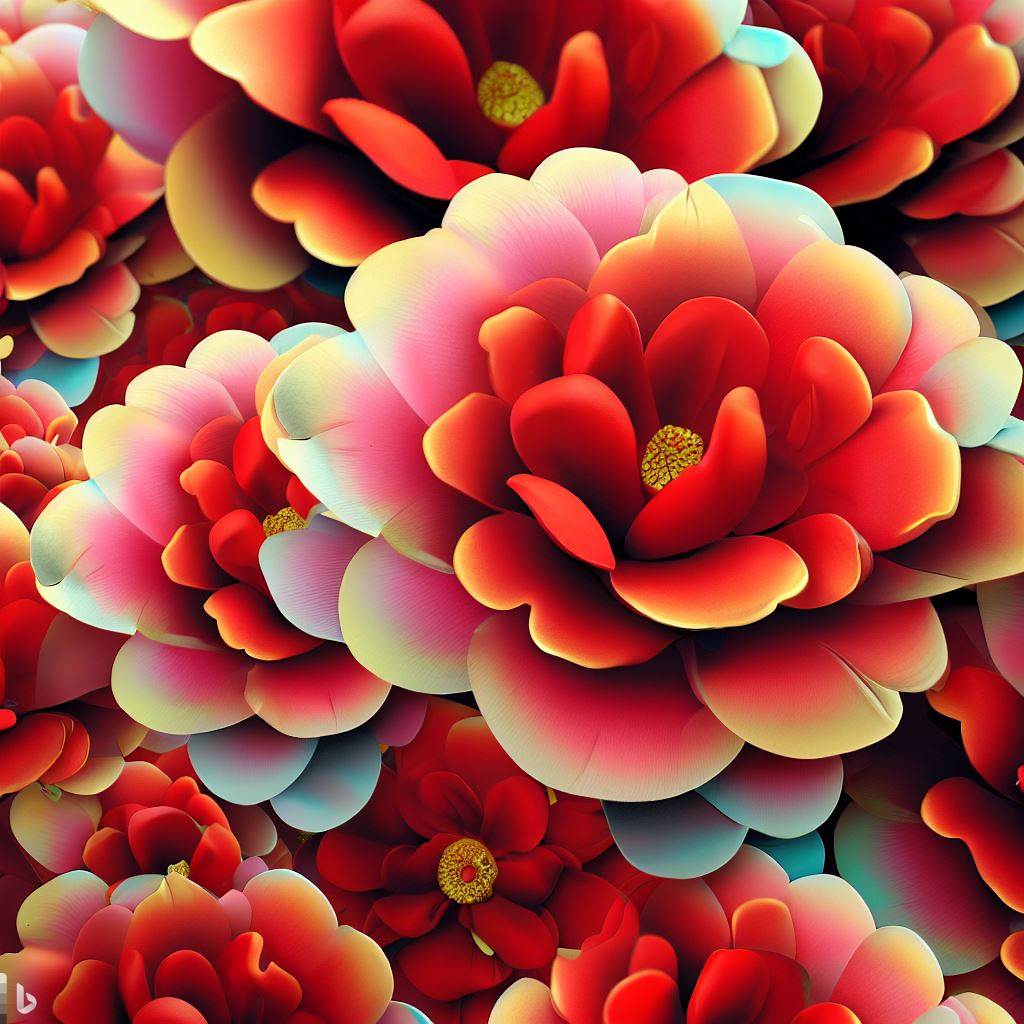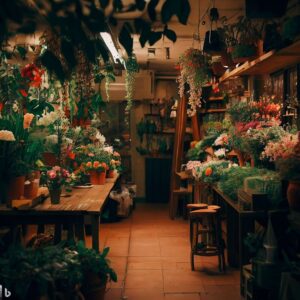Discover the beauty and symbolism of Chinese flowers! From elegant cherry blossoms to majestic peonies, explore the rich cultural significance and breathtaking aesthetics of traditional Chinese floral artistry. Learn more about the diverse range of flowers cherished in Chinese culture and their meanings. Delve into the world of Chinese flowers now!
Introduction
Chinese culture embodies deep symbolism and cultural significance, and flowers hold a significant place within this tapestry. Appreciating and cultivating flowers has been an integral part of Chinese culture for thousands of years.
The Chinese flower world has captivated hearts and minds for thousands of years with its unique and beautiful blossoms. From the delicate grace of cherry blossoms to the resplendent allure of peonies, Chinese flowers have captivated hearts and minds for thousands of years.
Throughout this exploration, we will uncover the fascinating world of Chinese flowers, examining their historical roots, cultural significance, and profound impact on Chinese society as a whole. Learn about the cherished floral artistry that continues to flourish within the rich cultural heritage of China as we marvel at the beauty and symbolism of these blossoms.
If you are a budding enthusiast or a curious soul, the field of Chinese flowers promises to be an exciting and rewarding journey of discovery and appreciation. Let us step into this aromatic garden of knowledge and immerse ourselves in this vibrant world of Chinese flowers.
Understanding Chinese Flowers
In the realm of Chinese culture, flowers hold a profound significance that extends far beyond their mere beauty. Understanding Chinese flowers goes beyond appreciating their aesthetics; it involves delving into the intricate world of symbolism, tradition, and cultural expressions. Let us embark on a journey of exploration to gain a deeper understanding of the enchanting language of Chinese flowers.

Symbolism in Chinese Flowers:
It has been known for centuries that each flower has its own meaning, conveying specific emotions and ideas. These meanings have been developed over centuries, and they have become an integral part of various aspects of Chinese life, including:
- Peony: According to Chinese culture, the peony represents prosperity, wealth, and feminine beauty. The peony is often depicted in Chinese art and poetry as a representation of love and harmony.
- Chrysanthemum: In Chinese culture, chrysanthemums hold a special place for demonstrating longevity and integrity. As a result of its resilience and ability to bloom in autumn, this flower is a symbol of admiration for the elderly, and it is prominently displayed on the Double Ninth Festival, which honors senior citizens.
- Lotus: Symbolizing spiritual attainment amidst worldly challenges, the lotus is revered for its purity and spiritual significance. It rises from muddy waters to blossom gracefully, representing the attainment of spiritual perfection.
- Orchid: A symbol of nobility, elegance, and refinement, the orchid is often portrayed as a symbol of moral character in Chinese art.
Floral Traditions and Practices:
The appreciation of flowers plays an integral role in Chinese culture from everyday rituals to grand celebrations. The following are some of the most prominent floral practices in Chinese culture:
- Chinese Flower Arrangement: A flower arrangement in China is described as “Kado” or “Hua Dan,” which emphasizes harmony, balance, and the use of minimal elements. It is influenced by nature and incorporates seasonal flowers.
- Flowers in Festivals and Celebrations: There are many flower-related customs associated with Chinese festivals. During Chinese New Year, homes are decorated with flowers and plants that represent prosperity and good luck. The Lantern Festival features colorful flower lanterns that add to the festive atmosphere.
- Floral Offerings: A variety of religious and spiritual practices use flowers as offerings to deities, ancestors, or departed loved ones. They are regarded as an expression of respect and devotion.
Flowers in Chinese Art and Literature:
Flowers have long served as a source of inspiration for Chinese artists and writers, infusing their works with symbolic meaning and artistic expression. Traditional Chinese paintings often feature flowers, capturing the essence of beauty and conveying emotions through delicate brush strokes. Similarly, flowers serve as metaphors for human emotions and experiences in Chinese literature, providing a poetic voice to them.
Preservation and Evolution:
Chinese flowers are being preserved and promoted as China continues to embrace modernization. Contemporary artists and designers are reinterpreting floral motifs in innovative ways, blending tradition with modern aesthetics, in order to preserve and promote traditional flower-related practices.
The Rich History of Chinese Flowers
Since millennia, flowers have been an integral part of Chinese culture, their allure woven into the tapestry of history, art, literature, and daily life. It is fascinating to explore the rich history of Chinese flowers, which spans dynastic eras, cultural exchanges, and profound symbolism. We invite you to take part in an exploration of Chinese flowers, an enchanting saga that spans time and culture.
Ancient Origins and Cultural Significance:
Historically, Chinese civilization has had a deep respect for flowers. It is believed that floral motifs were incorporated into various artifacts as early as the Shang and Zhou dynasties (approximately 16th to 3rd century BC), reflecting the reverence for nature and its beauty. As a symbol of prosperity, fortune, and spiritual connection, flowers became an integral part of rituals and ceremonies.
The Way of Flowers:
A cultural movement referred to as “Hua Shi” or “the Study of Flowers” emerged during the Han dynasty (206 BC to 220 AD) that encouraged the appreciation and cultivation of flowers. As a result of discussions among scholars and aristocrats regarding the symbolism and aesthetics of various flowers, flower arrangement, and cultivation techniques developed.
Taoist and Buddhist Influence:
The cultural significance of flowers was further enhanced by the fact that Taoism and Buddhism both play significant roles in Chinese spirituality. The flower symbolizes the transient and cyclical nature of life in Taoism, whereas in Buddhist art, flowers are often depicted as a symbol of purity and enlightenment by celestial beings.
The Four Gentlemen:
A recurring theme in Chinese art and poetry is the “Four Gentlemen,” four plants that embody distinct virtues: the plum blossom (symbolizing resilience), the orchid (symbolizing integrity), the bamboo (symbolizing humility), and the chrysanthemum (symbolizing endurance). Because of their beauty and character, these plants have become iconic symbols in Chinese art.
Imperial Gardens and Floriculture:
It is important to note that Chinese emperors and nobility contributed significantly to the cultivation of flowers. As living masterpieces of landscape design, imperial gardens, such as Yuanmingyuan (Garden of Perfect Brightness), featured a vast array of exotic and native flowers. As a result, floral cultivation became a prestigious pursuit, and experts developed unique methods to cultivate and hybridize flowers.
Flower Festivals and Celebrations:
During Chinese festivals, flowers are used as symbols of prosperity and good fortune, celebrating the seasons and harvests. As a symbol of new beginnings and abundance, the Lunar New Year, also known as the Spring Festival, is marked by the display of blossoms such as plums, peaches, and kumquats. Dragon Boat Festivals often feature fragrant sachets containing calamus and moxa, believed to ward off evil spirits and safeguard health.
Traditional Medicine and Culinary Uses:
It is well known that Chinese flowers have practical applications beyond their symbolic meanings. Traditional Chinese medicine incorporates several flowers for their medicinal properties. Safflower, for example, is widely used to promote blood circulation and honeysuckle, for its anti-inflammatory properties.
In Chinese cuisine, certain flowers are used to enhance flavors and aesthetics. Rose petals, jasmine, and osmanthus find their way into teas, desserts, and savory dishes, adding a delicate fragrance and visual appeal.
Floral Legacy and Modern Revival:
In contemporary times, Chinese flowers continue to be appreciated. Efforts to conserve traditional flower-related practices and artistic expressions ensure that the legacy of Chinese flowers is maintained. Using ancient floral motifs as inspiration, modern artists and designers infuse them with innovative interpretations and preserve the cultural essence of Chinese flowers through their creations.
Chinese Flowers in Art and Literature
With their profound symbolism and breathtaking beauty, Chinese flowers have been a prominent part of art and literature for centuries. For centuries, Chinese artists and writers have drawn inspiration from the enchanting world of flowers, infusing their works with deep meaning and aesthetic expressions. Explore the blossoming tapestry of Chinese flowers in art and literature, where each petal is a brushstroke, and every verse carries the scent of nature’s most captivating creations.
Flowers in Chinese Painting:
There is a long history of Chinese painting celebrating flowers. From delicate brushstrokes to minimalist depictions, Chinese artists capture the essence of the flower’s character and symbolism in their paintings. Many Chinese paintings highlight the virtues and cultural significance of the “Four Gentlemen” (four gentlemen), namely plum blossoms, orchids, bamboo, and chrysanthemums.
Flower and Bird Paintings:
It symbolizes harmony between humans and nature by combining flowers with birds as a form of Chinese art known as flower and bird painting. As a result of these paintings, viewers are encouraged to contemplate the innate connection between all living creatures, exemplifying the delicate beauty of flora and fauna.
Floral Motifs in Chinese Poetry:
Chinese poets have long been intrigued by the beauty and symbolism of flowers, using them as metaphors to convey emotions, explore philosophical themes, and commemorate the fleeting nature of life by using flowers as metaphors. The cherry blossoms, lotus, and narcissus frequently appear in classical Chinese poetry, each conveying a distinct message.
The Beauty of Impermanence:
A recurring theme in both Chinese art and poetry is the appreciation of the transient nature of flowers. As a poignant reminder of the impermanence of life, the elegance of blooming flowers is contrasted with their fleeting existence. Taoist philosophy aligns with the concept of accepting the natural cycle of birth, growth, decay, and rebirth.
Evolution of Floral Artistry:
The portrayal of flowers in art and literature is evolving in Chinese society as a whole. Modern artists combine traditional techniques with contemporary aesthetics, bringing new meaning to the timeless themes of nature’s beauty and symbolism. Chinese flowers continue to inspire creativity across a wide range of media, from traditional brush painting to digital art, due to their appreciation for Chinese flowers.
Types of Chinese Flowers
China, a land celebrated for its rich natural beauty and diverse landscapes, is home to a stunning array of flowers that have captured the hearts of people for centuries. Each region has its own flower treasures, each with a distinctive symbolism and cultural significance, ranging from snow-capped mountains to fertile plains. Join us on a journey to explore some of the most enchanting types of Chinese flowers, each contributing to the vibrant tapestry of this ancient civilization.

1. Peony (Paeonia suffruticosa):
One of the most iconic blooms in Chinese culture is the peony, often referred to as the “Queen of Flowers” due to its opulent beauty and delicate fragrance. It symbolizes prosperity, wealth, and feminine beauty. Traditional Chinese art frequently depicts it, demonstrating its regal allure and becoming a popular subject for poetry and stories.
2. Plum Blossom (Prunus mume):
The plum blossom, or “Meihua,” is cherished as a symbol of resilience and hope. Blooming in the midst of winter’s cold, it represents the ability to overcome adversity and heralds the arrival of spring. Plum blossoms are a common motif in Chinese paintings and poetry, evoking a sense of strength and renewal.
3. Chrysanthemum (Chrysanthemum morifolium):
Known as “Ju” in Chinese, the chrysanthemum is a beloved flower with profound cultural significance in China. This flower represents longevity, endurance, and nobility in Chinese culture. Chrysanthemums are prominent parts of the celebrations of the Double Ninth Festival, a day dedicated to honoring the elderly.
4. Lotus (Nelumbo nucifera):
Chinese culture holds the lotus flower as a sacred flower, representing purity, enlightenment, and rebirth. It is often associated with Buddhism and features in religious art and temple designs. The lotus, rising gracefully from muddy waters, symbolizes spiritual growth and the pursuit of perfection amidst life’s challenges.
5. Narcissus (Narcissus tazetta):
The Narcissus, also known as the “Water Fairy Flower,” is esteemed for its delicate beauty and sweet fragrance. Narcissus bulbs are traditionally grown in water-filled bowls during the Lunar New Year as harbinger of luck and blessings for the coming year. They represent good fortune, prosperity, and a bright future.
6. Jasmine (Jasminum sambac):
The jasmine plant, also known as molokhia, is widely celebrated for its exquisite fragrance and delicate white flowers. Jasmine flowers are often used to make fragrant teas, and their essence is incorporated into various perfumes and cosmetics. It holds symbolic significance, representing purity, grace, and elegance.
7. Camellia (Camellia sinensis):
The camellia, or “Cha” is famous as the plant from which tea is derived. Tea culture in China is deeply intertwined with camellia flowers, and they are held in high regard by tea lovers. Camellia can be found in a wide range of colors, including white, pink, and red, with each having its own unique characteristics.
8. Azalea (Rhododendron simsii):
It is well known that azaleas, or “Tsutsuji,” are popular ornamental flowers for their vibrant colors and lush blooms. Azalea festivals in China attract tourists from around the world to witness the breathtaking displays of these magnificent flowers. They symbolize passion, femininity, and the love of nature.
9. Magnolia (Magnolia denudata):
A Chinese magnolia tree, or “Huating,” is renowned for its exquisite, fragrant flowers, which represent purity and nobility; they are commonly found in Chinese gardens and parks, which contribute to the tranquility and beauty of the environment.
10. Osmanthus (Osmanthus fragrans):
It is commonly used in Chinese desserts as a symbol of happiness, harmony, and auspiciousness. Osmanthus is also associated with the Mid-Autumn Festival, a time for family reunions and thanksgiving.
Benefits of Using Chinese Flowers
Known for their exquisite beauty and rich cultural significance, Chinese flowers offer a variety of benefits which extend beyond mere aesthetics. These captivating blooms have played a significant role in Chinese culture, art and daily life for centuries. Whether in herbal remedies, culinary delights, or symbolic expressions, Chinese flowers provide a multitude of advantages that enhance well-being, cultural connections, and an appreciation of nature’s beauty. The benefits of Chinese flowers are numerous, so let’s take a closer look at them.
1. Medicinal Properties:
There are many Chinese flowers that possess valuable medicinal properties, which are used in traditional Chinese medicine (TCM). A wide variety of flowers have been studied for their healing properties, including honeysuckle (Jin Yin Hua), chrysanthemum (Ju Hua), and safflower (Hong Hua). As well as promoting blood circulation, safflower is believed to alleviate pain and promote blood circulation. Honeysuckle is believed to possess anti-inflammatory and antiviral properties, whereas chrysanthemum soothes the eyes and promotes relaxation. Herbal remedies incorporating these flowers contribute to the holistic approach of TCM in promoting health and well-being.
2. Culinary Delights:
Chinese flowers add a touch of elegance and unique flavors to culinary creations. Osmanthus (Guihua) infuses teas and desserts with a delightful and aromatic essence, while jasmine flowers (Molihua) lend their enchanting fragrance to teas and rice dishes. Rose petals and chrysanthemums are also used to infuse a subtle floral note into various culinary delicacies. Apart from the delightful taste, the use of Chinese flowers in cuisine reflects the appreciation of nature’s bounty and adds a visual feast to the dining experience.
3. Aesthetics and Decor:
Chinese flowers have an undeniable visual appeal, making them a wonderful choice for decorating homes, gardens, and special events. Chinese flowers offer grace and charm to any setting, from vibrant blooms such as peonies and azaleas to delicate elegance like plum blossoms and lotus flowers. They exude a sense of beauty and cultural heritage, creating a harmonious ambiance that connects people to the wonders of nature when placed in decorative arrangements, whether at weddings, festivals, or in everyday spaces.
4. Symbolism and Expressions:
Chinese flowers have a deep symbolic meaning, allowing them to convey messages and emotions without words. Giving a bouquet of specific symbols becomes an elegant expression of good wishes, love, or appreciation. The peony symbolizes prosperity and happiness, making it a popular choice for celebratory occasions. On the other hand, chrysanthemums symbolize longevity and are frequently associated with honoring the elderly. A person can communicate sentiments and intentions in a meaningful and culturally resonant manner by understanding the symbolic language of Chinese flowers.
5. Spiritual and Cultural Connections:
As the appreciation for Chinese flowers is intertwined with Chinese philosophies such as Confucianism, Taoism, and Buddhism, they foster a deeper connection with the rich cultural heritage of China. In religious ceremonies and temples, for example, the lotus is associated with purity and spiritual enlightenment. It is through the embrace of Chinese flowers that individuals can gain insights into the spiritual and cultural aspects that have shaped Chinese civilization for thousands of years.
6. Stress Relief and Relaxation:
Certain Chinese flowers, such as lavender (Xun Yi Cao) and jasmine, are known to promote relaxation and reduce stress due to their soothing properties. Known for their soothing effect, lavender’s gentle aroma has been associated with calming effects, while jasmine’s fragrance has been associated with alleviating anxiety and inducing a relaxing atmosphere. Aromatherapy or tea infusions of these flowers offer a natural and refreshing way to unwind and rejuvenate.
FAQ’s
Discover the captivating allure of the plum blossom, also known as “media” in Chinese. As a symbol of resilience and perseverance, this exquisite flower reminds us that even during the harshest winter snowfall, it blooms most vibrantly. In addition to its graceful petals and unwavering spirit, plum blossoms have become a symbol of strength, inspiring us to face adversity with courage and grace.
When the Chinese New Year arrives, chrysanthemums, particularly those in golden yellow or purple hues, hold significant symbolism as lucky flowers. You are believed to improve your wealth and fortune in the upcoming year by displaying these beautiful blooms in your home. The addition of golden chrysanthemums to your living space may therefore be an auspicious choice for attracting prosperity and good fortune.
There are four revered plants known as the Four Gentlemen in Chinese art, also referred to as the Four Noble Ones. They are the plum blossom, the orchid, the bamboo, and the chrysanthemum. As symbols of various virtues, these botanical icons carry a deep cultural significance and represent the essence of elegance, resilience, humility, and longevity in traditional Chinese aesthetics.
A perennial hibiscus species belonging to the mallow family (Malvaceae), the Chinese hibiscus is commonly referred to as tropical hibiscus, shoe-black plant, or China rose. This plant is highly cultivated for its strikingly vibrant and large flowers that add an explosion of vibrant color to gardens and landscapes. Chinese hibiscus is a popular choice among enthusiasts as well as horticulturists due to its captivating beauty.
The color of a flower has its own significance in Chinese culture beyond the inherent symbolism of specific flowers and plants. Vibrant hues such as pink and red are associated with celebration, good fortune, and joy, embodying positive energies. In contrast, white evokes notions of death and ghosts, implying a more somber and mournful connotation. As a result, the choice of color in flowers contributes another layer of meaning and intention to the rich tapestry of Chinese cultural beliefs and traditions.
Conclusion
In Chinese culture, flowers play a profound role. From the cherished Four Gentlemen to the auspicious red and pink blooms symbolizing joy and celebration, these floral treasures beautifully reflect the values, beliefs, and deep-rooted traditions of this ancient civilization. With their timeless allure, these exquisite blossoms continue to captivate hearts and souls, leaving a lasting impression on those who appreciate their beauty and symbolism.







